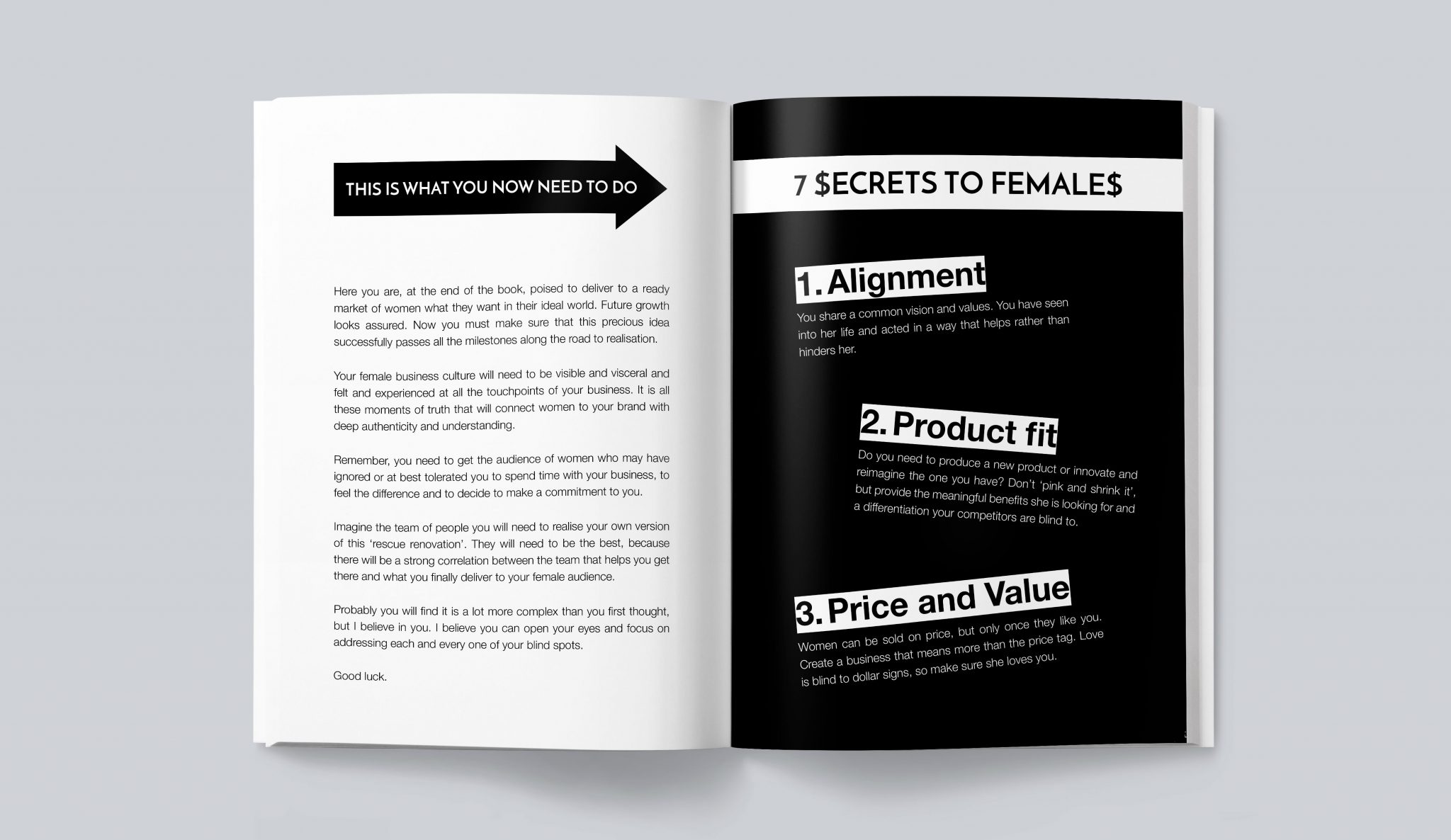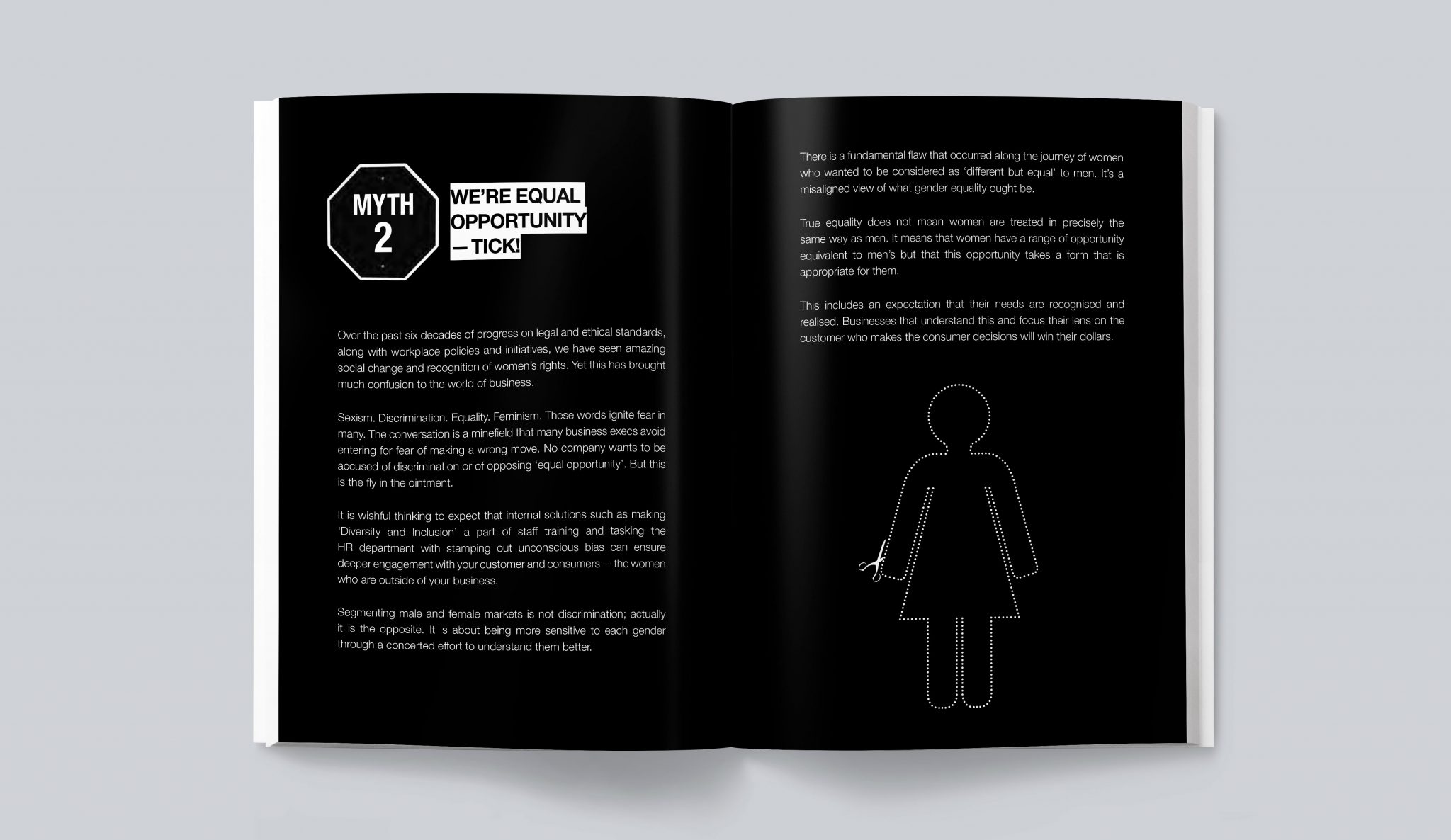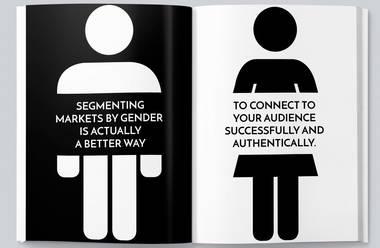Given this is a book about how many businesses still don’t get the importance of women to their future success, given it highlights the need to see that opportunity through a female lens, and given that its written by a very successful women who founded and ran an agency which specialised in marketing to women, you can understand that I am a little nervous when coming to review it.
However, whatever gender you are, there is lots to like in the book.
Bec Brideson (who deliberately chooses to hide her gender on the cover using her initials R.J. instead) makes a powerful case for the future importance of women to the success of your business.
The need to avoid the old premise of “think pink and shrink”.
“The century of women should be an anticipatory culture, looking towards the future and pre-empting the needs of women rather than reacting to them once they have had to complain, ask, or give up and try elsewhere. This would reflect a business that is female-lensed and that purposefully acknowledges and adjusts to the new perspectives and different needs of women.”

She builds on the work done by Boston Consulting Group’s Michael J. Silverstein and Kate Sayre, the co-authors of Women Want More: How to Capture Your Share of the World’s Largest, Fastest-Growing Market (HarperCollins, 2009).
She tackles some of the myths that exist in too many approaches to marketing to women. In ‘Myth 2 – We’re equal opportunity – Tick!’, she makes the very valid point that “Segmenting male and female markets is not discrimination; actually it’s the opposite. It is about being more sensitive to each gender through a concerted effort to understand them better.”
She provides guidelines on getting to better results: a three stage process that starts with “more heart and less head” research.
It moves onto re-imagining your business culture – internally and externally:
“Don’t make feelings something women bring to work but then have to hide in the bottom drawer with their handbag”.
The final section is developing a strong gender-intelligent blueprint in which Brideson uses an analogy with renovating a house, rightly to mind, recognising that “many parts of the existing business will be retailed and even enhanced”.
I do have a couple of minor concerns:
The first of which is that an awful lot of emphasis is given to the statistic “Women make up 85% of consumer purchases”; nowhere, however, is this really clarified. Is this complete control or influence? Is this based on behaviour or is it claimed?

Despite searching on the internet for a while I can’t find a definite answer, though I did find a few people trying to find the answers to my questions. Having said that, this does not negate the overall point as other statistics show “Globally, they [women] control about $20 trillion in annual consumer spending, and that figure could climb as high as $28 trillion in the next five years. Their $13 trillion in total yearly earnings could reach $18 trillion in the same period.
In aggregate, women represent a growth market bigger than China and India combined—more than twice as big,” Silverstein and Sayre.
The second one was that I felt that too many of the case histories played to the more stereotypical ‘women’s markets’ – DeBeers (jewellery), Dove (Beauty), Ariel (laundry).
While these cases make good points about adopting a female lens, I wanted more about other categories like the Shetab (taxi) and AFL (sports). I wanted more financial services and technological brand examples.
However, if more people adopt the thinking in the book, hopefully there will be more examples to be quoted.
By Giles Lury, director, The Value Engineers
Newsletter
Enjoy this? Get more.
Our monthly newsletter, The Edit, curates the very best of our latest content including articles, podcasts, video.
Become a member
Not a member yet?
Now it's time for you and your team to get involved. Get access to world-class events, exclusive publications, professional development, partner discounts and the chance to grow your network.




